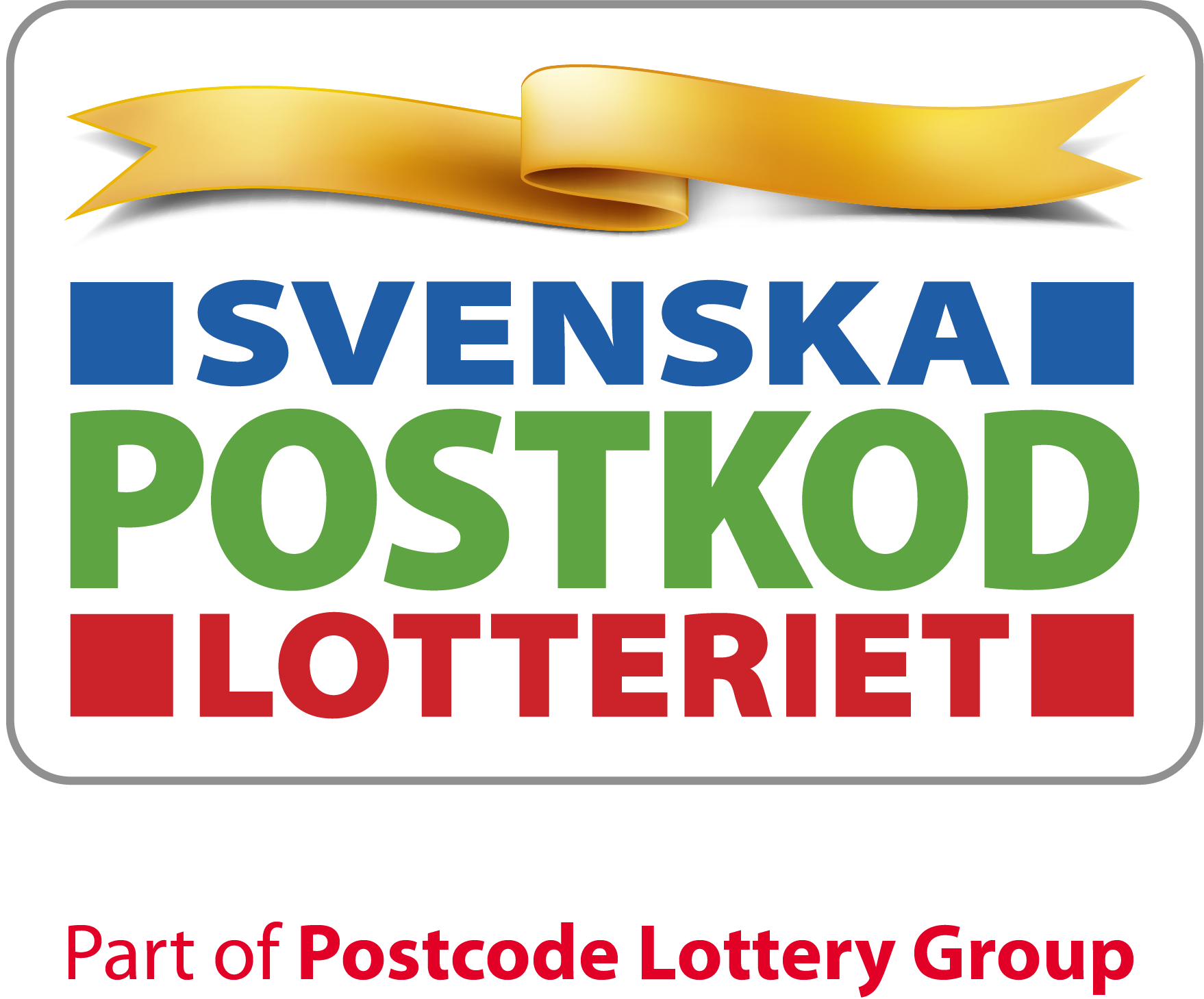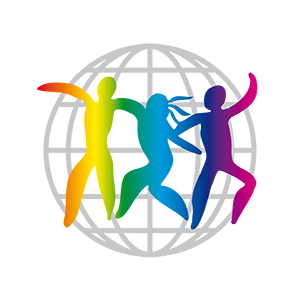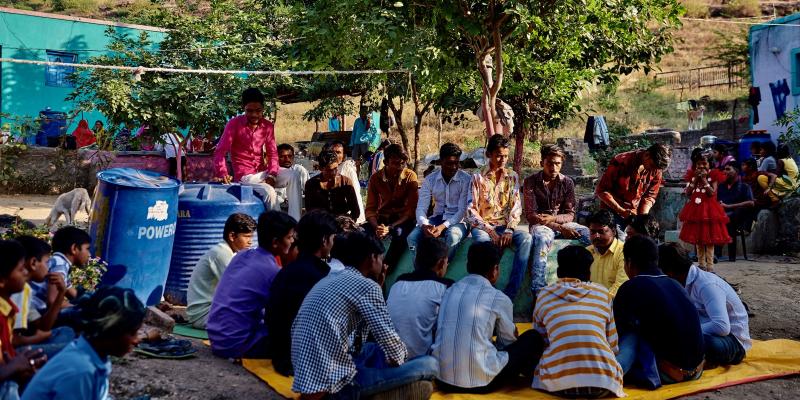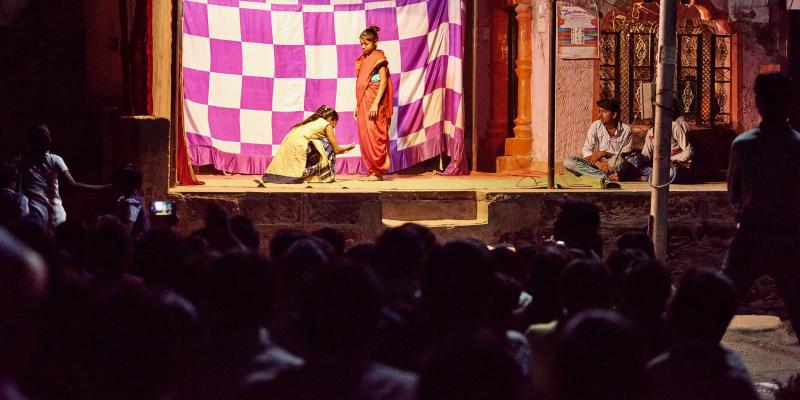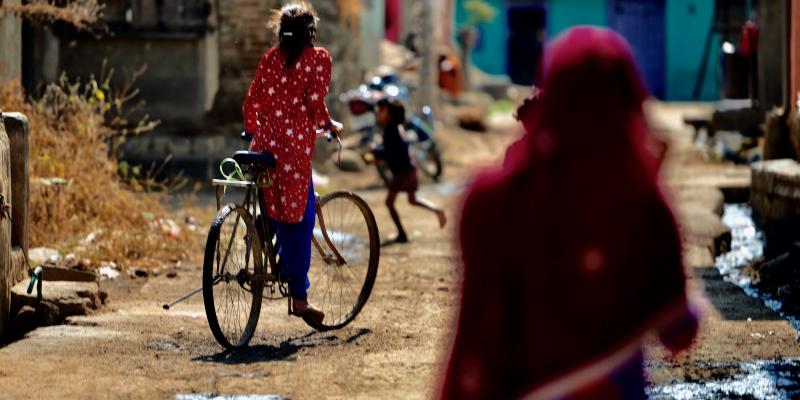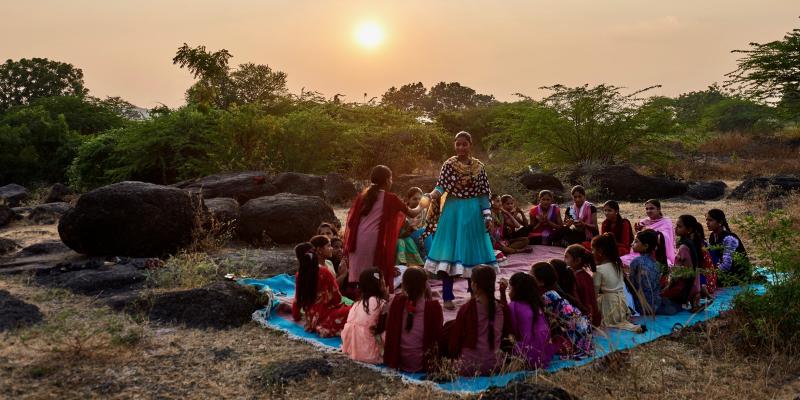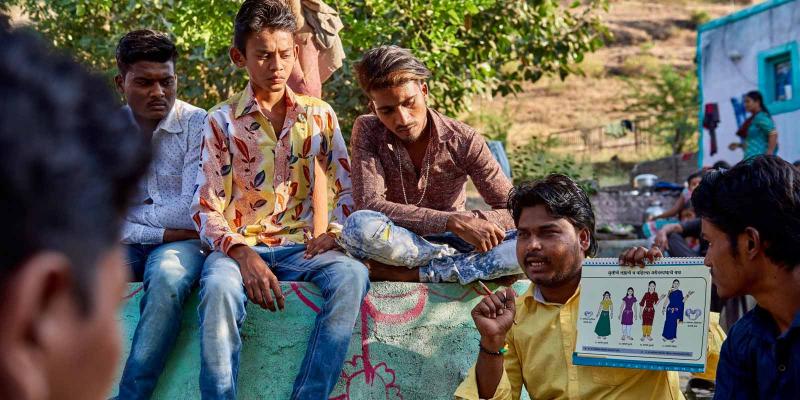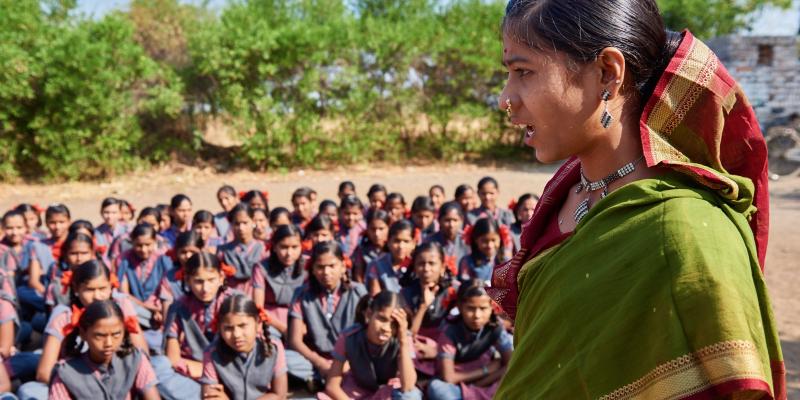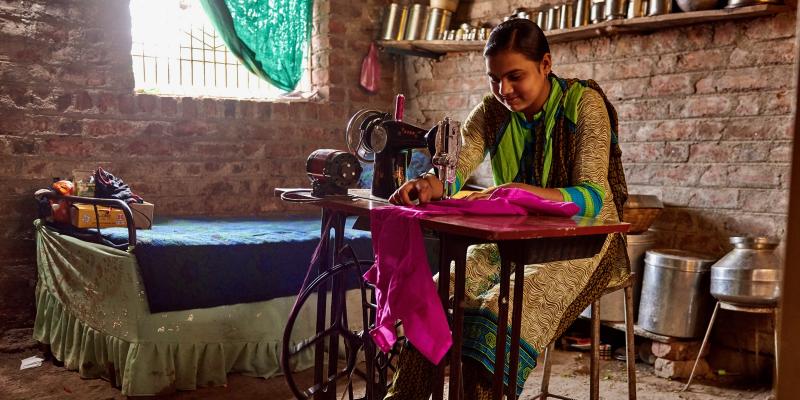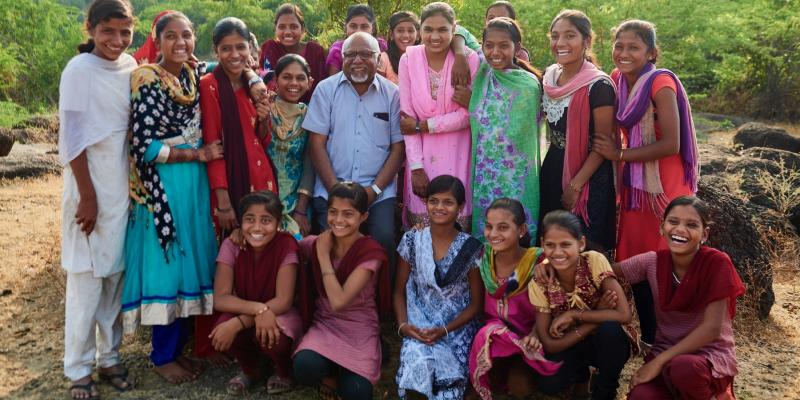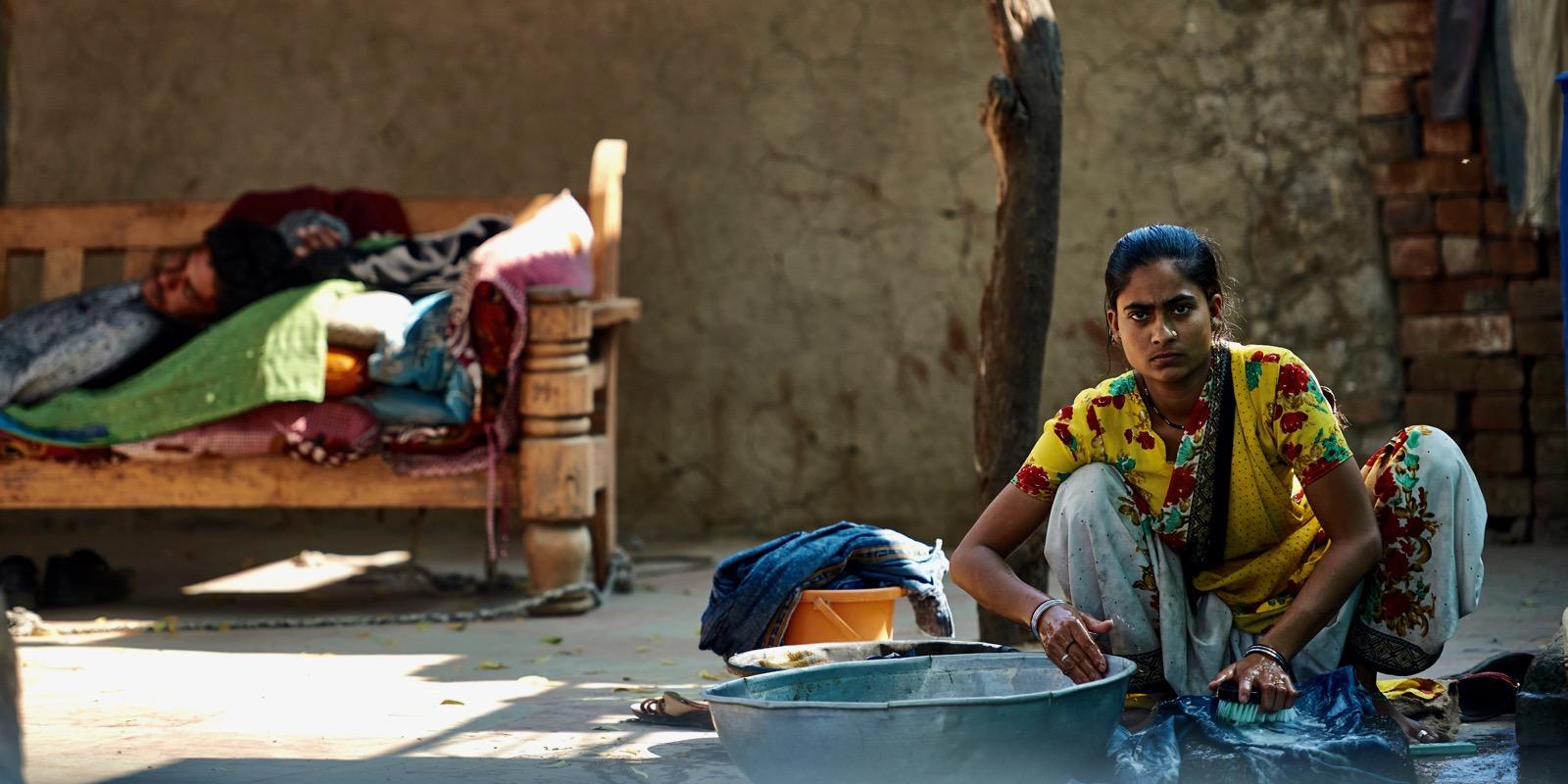
“The worst violation is being forced into child marriage. Every day, 15,600 girls are subjected to child marriage in India. My job is to put a stop to it,” says Ashok Dyalchand, who has been fighting for girls’ rights for over 40 years.
I grew up in a beautiful house, surrounded by a large garden. My mother was a doctor and my father led a big organization. I went to the best school in the city of Shimla, and in my spare time I played billiards, field hockey and table tennis,” says Ashok.
“I decided to follow in my mother’s footsteps and was accepted onto India’s top medicine course. I wanted to be a successful eye specialist, to work at a nice hospital in a big city, earn good money and live a comfortable life.”
Rural mobile hospital
When it was time for Ashok to undertake the practical part of his course, he joined a healthcare team that travelled around to some of the mountain villages. It was a rural mobile hospital that carried out eye operations on poor people, who would never have got the help they needed otherwise.“I didn’t do it because I was a good person; I was planning to return to the city and the good life as soon as possible. But I knew that the rural mobile hospital would give me lots of practical experience in a short space of time because we examined 400 patients every day and carried out 200 operations a week.” Ashok travelled around with the rural mobile hospital for three years and encountered a world that was completely different to the one he was used to.
“I’d grown up in luxury, protected from the problems around me. I’d never even been to an Indian village before I started working with the rural mobile hospital.”
Ashok was now surrounded by people living in extreme poverty. Adults and children who were hungry and sick and who weren’t getting any kind of education.
The girl from Tibet
One day, Ashok examined a poor little Tibetan refugee girl. He saw that she had an eye disease that could be cured if she got the right treatment quickly. Otherwise she would go blind. Ashok placed her in one of the hospital beds, but his boss got angry and threw the girl out because the beds were only for patients who were to be operated on.“A week or so later, I saw the girl at the market; she was being supported by her mother. I was devastated when I realised that the girl had already gone blind. I was ashamed that I hadn’t fought harder for her.
Ashok found his boss and shouted:
“You’ve made a little girl blind. I’m not staying at your bloody hospital for another minute.”
“I stormed out and never went back. I knew now that I wouldn’t be able to fulfil my plan to become a well-paid eye doctor at a nice hospital. That little girl had changed me forever.”
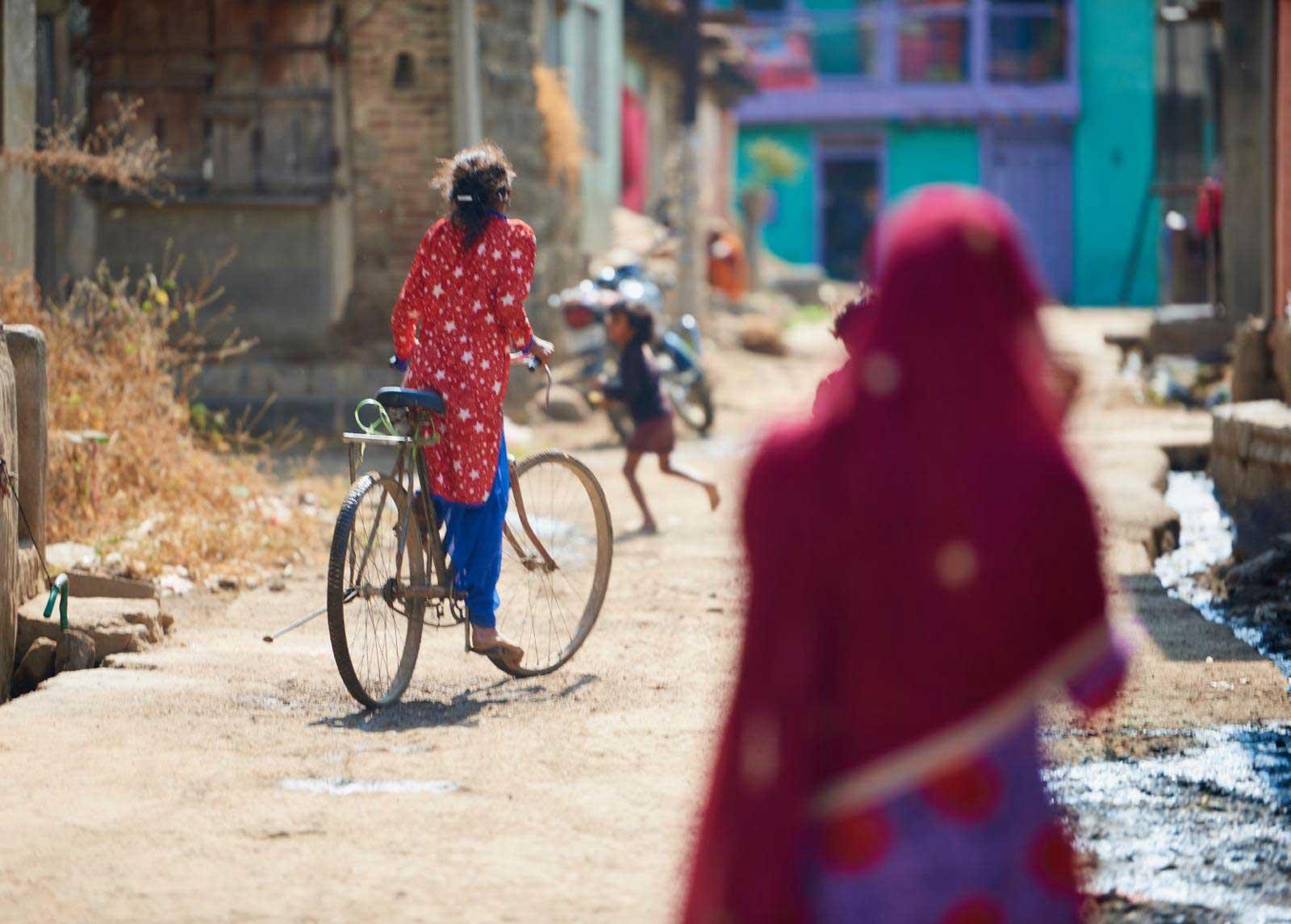
Women dying
Ashok decided to offer medical care to poor people. In 1975, he took over an old hospital with five beds in the little town of Pachod, which had been affected by severe drought and famine for four years.“I drove around on a motorbike to talk to people and find out what they really needed. I was out every day because I was the only doctor in a region with 78 villages. I interviewed, examined, performed operations and then went out on my motorbike again!”
Ashok soon understood that the villagers felt the biggest problem was that many pregnant women were dying because of the lack of good maternal health care for women while they were expecting and help during childbirth.
“All the roads to the hospital were bad and transportation was by oxcart. During my first week at the hospital, two young girls and their unborn babies died because they hadn’t got to the hospital in time.”
Ashok came up with the idea of teaching simple maternal health care to the traditional midwives, or dais, in Indian villages. That way they would detect any problems much earlier on in the pregnancy and know whether a woman needed medical treatment at the hospital. His idea proved to be a huge success and it spread across India. Pregnant girls and women flocked to Ashok’s little hospital. It was now possible to save the lives of many women and their babies.
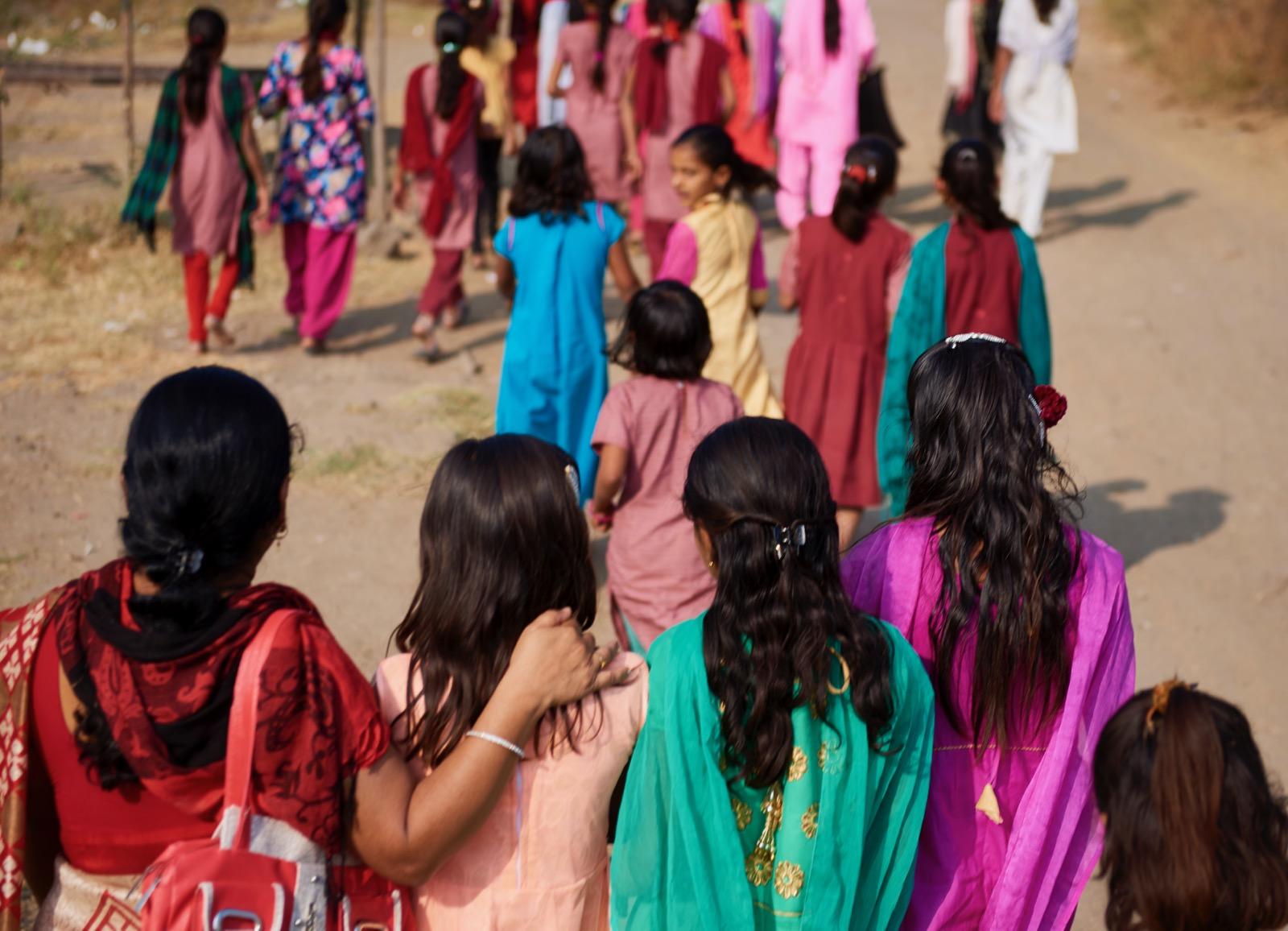
50,000 girls have been reached by Ashok and his organization's work. Half of them are unmarried girls in 500 villages who have taken the course of life skills education and now belong to a girls club.
Child marriage
“We realised that many of the problems that young pregnant women had were down to the very fact that they were young. More than 8 in 10 girls in the villages married before they reached the age of 18, with most of them being just 14. The girls were getting pregnant before their bodies were ready to give birth because they were still children themselves. Often both the girl and the baby died during childbirth. I felt I had to put an end to child marriage in order to save lives, but also because all the girls who were victims lost their own childhood and had their rights violated.”Ashok realised that girls were being treated worse long before the marriage itself.
“From very early on in life, boys were taken better care
of than girls. Sons got more breast milk, food, vaccinations and other health care than daughters. Girls were often undernourished and if they fell ill, they were taken later, or not at all, to see the doctor.”
While the boys went to school and spent time with their friends, Ashok saw that the girls in the villages were at home, doing all the household chores and looking after their younger siblings. The idea was to prepare the girls for being someone’s wife and someone’s mother, not to allow them to live their own lives.
“We wanted to be a voice for the girls, and their defender.” In 1985, Ashok and his seven colleagues started the organization IHMP (Institute of Health Management Pachod): a centre that would work with preventive maternal care and health care, and fight against child marriage and in defence of girls’ rights.
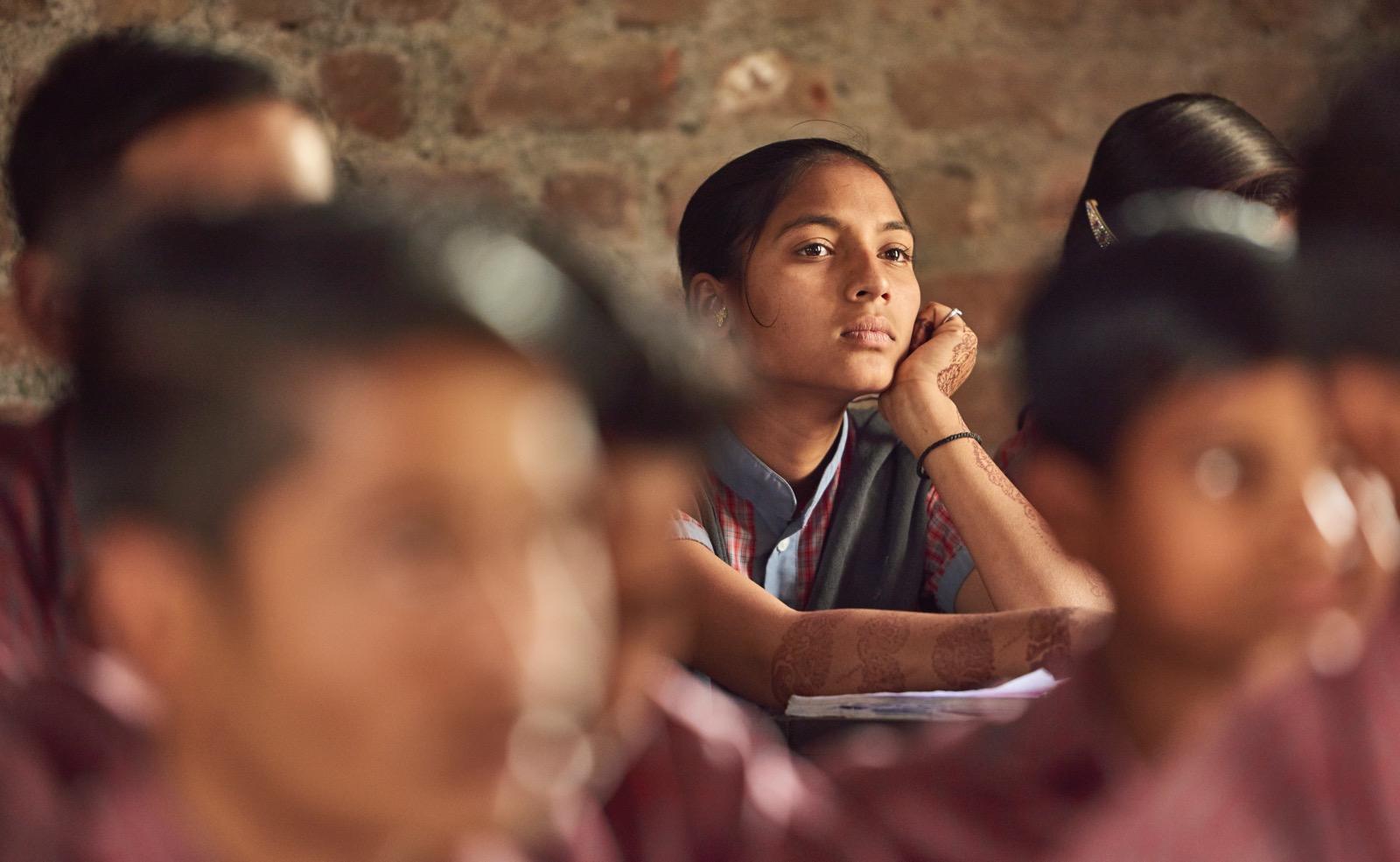
Girls who have gone the course of life skills education and still are in girls clubs have managed to stop childhood marriage after childhood marriage and go to school. They have gained knowledge and courage and succeed in persuading their parents to stop planning child marriage.
Girls becomes slaves
“Nothing violates a girl’s rights more than subjecting her to child marriage. She is forced to quit school to instead become a slave to her husband, give birth to his children and do all the household chores. She is robbed of her family, her friends, her freedom and her dreams. The girl becomes a prisoner in her own home. I wondered whether this was what families really wanted for their daughters. And besides, child marriage is actually against the law in India,” explains Ashok.After talking to thousands of villagers, Ashok understood lots of important things. Most of the families didn’t want to marry off their daughters as children, but old traditions, group pressure and poverty left them feeling they had no choice. All the neighbours became suspicious if a family didn’t marry off their daughter early, according to village custom. Rumours would start up. “There must be something wrong with the daughter if they don’t want to marry her off? Maybe there’s something wrong with the whole family?”
In India, the girl’s family pays a dowry to the husband’s family when it’s time for the wedding, although this is also against Indian law. The dowry can be money, furniture, jewellery, cars, motorbikes, cattle or other items. The older the girl is, the more her family has to pay. That’s why poor families often feel forced to marry off their daughters at a young age. It’s cheaper that way. And because the girl is going to be married off so early, the families don’t think there’s any point in letting her go to school for any length of time. It’s wasted money because the daughter isn’t going to contribute money to the family, as she’s going to be a housewife and look after her new family. The families are also afraid that boys and men will subject their daughters to sexual harassment if they spend time outside the home, such as on their way to and from school. It brings shame on the daughter and the family’s honour and makes it harder to marry her off.
Life Skills Education for girls
“We could see that girls had their rights violated because society was not equal and girls and women lacked worth in many ways. They were denied knowledge and power over their own lives. We also understood that many families didn’t want things to be like this, and instead wanted their daughters to avoid child marriage, to finish school, learn more and be happy.”The villagers and Ashok decided to set up clubs just for girls, where they could support one another and learn important things. Together they produced a textbook on Life Skills Education that would help the girls cope better with life. The subjects were chosen based on what the villagers themselves thought was important for their daughters to learn. It covered everything from girls’ rights, menstruation and health, how to report an assault and how banks work to learning a craft to help them earn a living as adults. With more knowledge, Ashok hoped that the girls, their families and entire villages would raise girls’ status and be better at protecting them from child marriage.
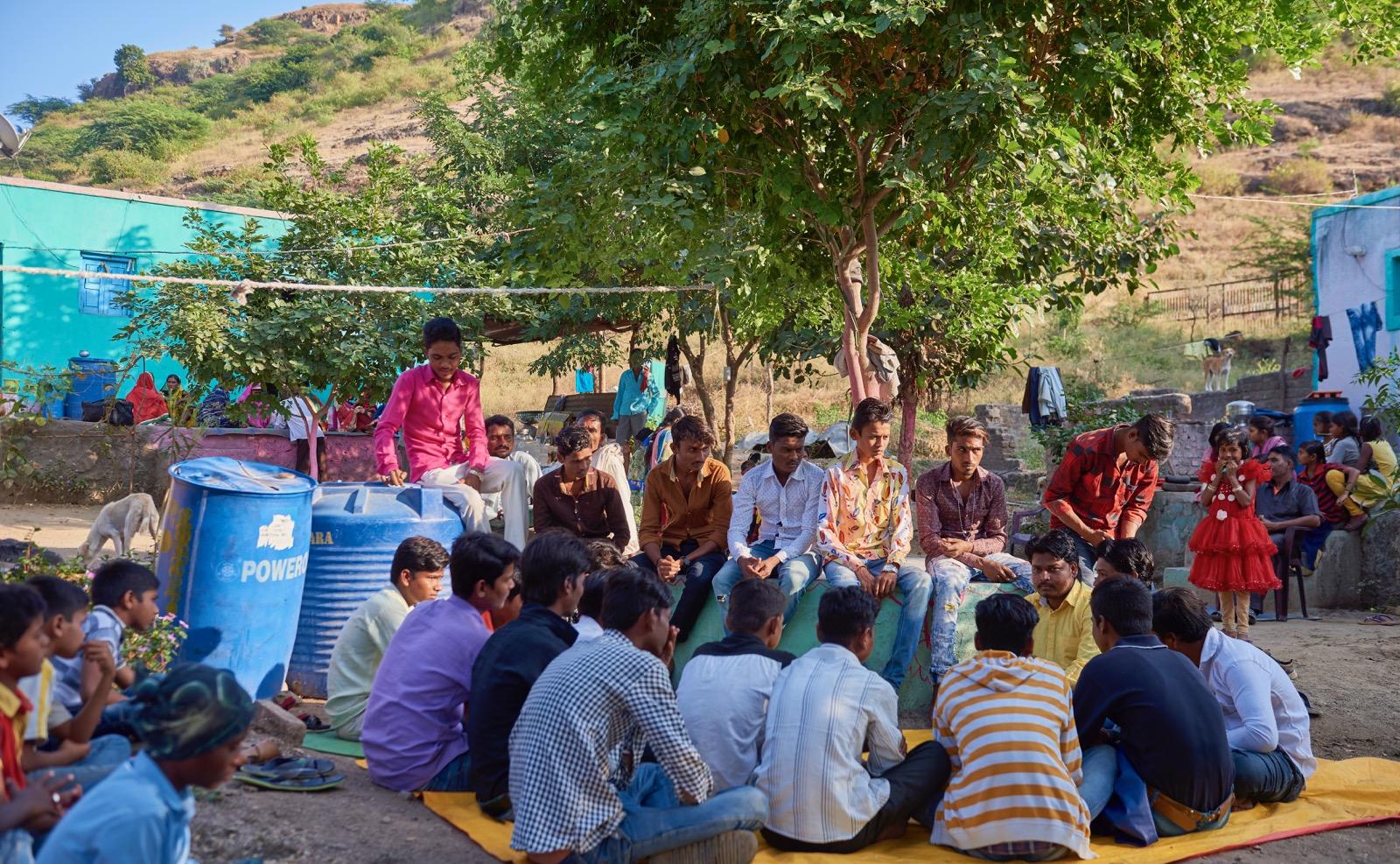
Meeting in the boys club: The boys meet once a month and learn about girls' rights, child marriages and gender equality.
Girls Clubs
“We had to think carefully about how to go about things in a way that would have the approval of the villagers because girls rarely or never went anywhere other than home or school. There were two really important things to do: find a safe way and a safe place for the girls to meet and learn. The villagers themselves suggested venues for teaching life skills. Places like the village hall, a temple or a classroom after school.”Since the villagers placed great trust in the female health workers, or Ashas, who are in every Indian village, Ashok felt they would be the perfect teachers for the girls. The health workers were trained by IHMP in how to teach the Life Skills Education Class, and 1999 saw the first clubs starting up. Each club was made up of 25 unmarried girls aged 11-19, who met twice a week for six months.
“The girls’ self-confidence grew as they gained more knowledge and the opportunity to get out of the house and talk to one another in a place that was just for them. And where their opinions mattered.” The girls shared what they learned about girls’ rights with their parents and neighbours.
Ashok and IHMP started more Girls Clubs in other villages. Before the courses came to an end, the girls chose someone from the group to undergo leadership training and lead the clubs and teaching from then on. The Girls Clubs also started demonstrating and putting on street plays to highlight their rights in the villages. IHMP educated parents, the police, members of village councils and others in girls’ rights.
Brave girls
After a while, things started to change with the practice of child marriage in the villages around Pachod.“Girls who had completed the Life Skills Education Class and who continued to attend the Girls Clubs managed to stop marriage after marriage and finish school. The girls had gained knowledge and courage. They had learned to speak up and use good arguments, which helped them convince their parents to stop planned child marriages. A group that used to be completely invisible and powerless had suddenly succeeded in explaining their rights and the importance of daughters also being allowed to finish school and gain a profession!” explains Ashok.
Although the work was going well, Ashok was still concerned that things weren’t moving fast enough. Many girls were still being forced to marry, and many were dying in childbirth.
“We started working with newly-married couples where the girl was a child under the age of 18. We explained to her, her husband and the whole village about all the dangers involved in the girl getting pregnant, and tried to encourage them to delay the first pregnancy for as long as possible. We worked with the state health workers to try and change people’s views on what is an appropriate age to marry. We explained the benefits of contraceptives and taught them about girls’ rights. We also made sure that the girls were given support and regular health checks. This helped save the lives of many young girls.”
So what about the boys?
In his work over the course of forty years, Ashok and IHMP have in fact never come up against any serious opposition because everything they do is based on what the villagers themselves want for their daughters. But sometimes teenage boys and young men in the villages threw stones at them and shouted: “You’re teaching the girls to stand on our heads!” Next time you come, we’ll stone you!”Ashok realised that the boys felt left out and that it was a big mistake.
“Obviously the boys had to understand and be involved if we were to stop child marriage. It is after all men who are marrying girls who are too young, and boys and men who beat and discriminate against girls and women. That’s why the boys also have to be on board and learn about gender equality.”
In 2014, Ashok and IHMP started up Boys Clubs as well, which work in roughly the same way as the Girls Clubs. The boys get together once a month and learn about girls’ rights, child marriage and gender equality.
Major successes
Some 50,000 girls have been reached by Ashok’s work. Half of them are unmarried girls in 500 villages who have completed the Life Skills Education Class and who now belong to a Girls Club. 5,000 unmarried boys and young men have so far been reached via the Boys Clubs.The average age of a girl giving birth to her first child has risen to 18 in the villages where IHMP works. Fewer mums and babies are dying in childbirth. IHMP now works in 173 villages and has 120 employees, including doctors, nurses, researchers and social workers.
“When we started our work in Pachod, the average age of a girl when she got married was 14; now it’s 17. It’s better than it was, but of course we won’t be satisfied until everyone who marries is at least 18 years old.” In the villages where Ashok works, there has been a considerable improvement in the status of girls, and reports of his work have spread far and wide around the world. IHMP has run training courses at the centre in Pachod for social workers from Afghanistan, Bangladesh, Nepal, Sri Lanka, Thailand, Ethiopia, Kenya, Somalia and Sudan.
“Our goal is freedom for girls and a society free from sex discrimination and inequality. We have a long road ahead, but every time I meet the girls in our clubs and hear about their dreams for the future, it gives me new strength to continue with this important mission!” says Ashok.
Related stories
Långgatan 13, 647 30, Mariefred, Sweden
Phone: +46-159-129 00 • info@worldschildrensprize.org
© 2020 World’s Children’s Prize Foundation. All rights reserved. WORLD'S CHILDREN'S PRIZE®, the Foundation's logo, WORLD'S CHILDREN'S PRIZE FOR THE RIGHTS OF THE CHILD®, WORLD'S CHILDREN'S PARLIAMENT®, WORLD'S CHILDREN'S OMBUDSMAN®, WORLD'S CHILDREN'S PRESS CONFERENCE® and YOU ME EQUAL RIGHTS are service marks of the Foundation.
